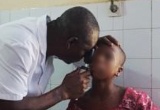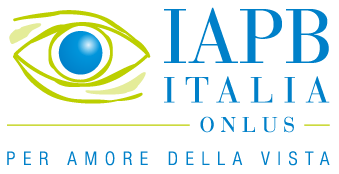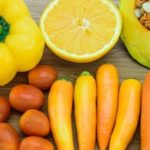The surge of diabetes
Diabetics in Italy have doubled in 30 years . I.B.D.O. report: 22% of diabetics suffer from retinopathy
 We are witnessing an explosion in the number of diabetics, a trend assisted by unhealthy habits, such as sedentariness and unhealthy eating. In Italy alone, the number of diabetics has almost doubled: in 2015, 3.27 million people, corresponding to 5.4% of the population, were declared to be suffering from diabetes, whereas 30 years previous, the percentage stood at 2.9%. This illness, caused by high blood sugar levels, can also jeopardize our sight, since it can damage the retina (diabetic retinopathy).
We are witnessing an explosion in the number of diabetics, a trend assisted by unhealthy habits, such as sedentariness and unhealthy eating. In Italy alone, the number of diabetics has almost doubled: in 2015, 3.27 million people, corresponding to 5.4% of the population, were declared to be suffering from diabetes, whereas 30 years previous, the percentage stood at 2.9%. This illness, caused by high blood sugar levels, can also jeopardize our sight, since it can damage the retina (diabetic retinopathy).
A report presented on April 17th 2018 in Rome emphasized the presence of a large gap between the North and the South of Italy. The number of diabetics is higher than the national average in Calabria, Basilicata, Sicily, Campania, Puglia, Abruzzo and Lazio, whereas the lowest concentration is found in the autonomous provinces of Trento and Bolzano and in Liguria. This divide is similar to the one between rural areas and urban centres. This research was conducted by the Italian Diabetes & Obesity Barometer Report, which was written by I.B.D.O. Foundation and the University of Rome Tor Vergata.

Diabetes is a chronic illness and early diagnosis is important. Blood sugar tests are essential as high sugar levels over an extended period of time can damage various organs. The I.B.D.O. report explains:
Diabetes is also the first cause of cardiovascular and kidney diseases, illnesses of the eyes and of the lower limbs. Fifteen percent of people with diabetes suffer from coronary artery disease, 22% suffer from retinopathy that can cause blindness, 38% have renal impairment […] that can lead to dialysis and 3% have problems to their lower limbs that can lead to amputation.
Glaucoma: searching for its genetic causes
NATURE GENETICS: THE RISK OF BEING AFFECTED BY GLAUCOMA COULD BE TO PREDICTED WITH A 75% ACCURACY RATE

British and American scientists have identified 133 genetic variations of the most widespread type of glaucoma (also known as open-angle glaucoma), some of which are entirely new. In fact this disease is hereditary: people with relatives affected by glaucoma should see an ophthalmologist regularly.
Dr. Pirro Hysi (King’s College, London, UK) who directed the research, declared:
Knowing someone’s genetic risk profile might allow us to predict what risk of [developing] glaucoma he or she carries so that in the future we can focus scarce health care resources on those most at risk.
Since glaucoma is a serious cause of irreversible blindness globally (it affects 55 million people), the aim is to prevent the damage it may cause to the optic nerve. Thanks to an early diagnosis, patients can receive a timely therapy to reduce high eye pressure (usually by means of specific eye drops). Glaucoma can currently be diagnosed only through an ophthalmologic examination, which includes a measurement of the tone of the eye (tonometry). In short, we must never lose sight of prevention!
Sources: Nature Genetics, King’s College London, Pop. Science
About 1,500 free eye examinations performed in Togo
More than 400 pairs of glasses were donated, while 130 people are in need of eye surgery. The FON.T.ES. campaign is supported by IAPB Italy
 Free eye examinations, followed by a donation of glasses and medicines, were performed during a mass screening for eye diseases in Togo, from 7-11 May 2018. The campaign was conducted by the nonprofit organization “FON.T.ES.-SO.T.ES.-Togo”, thanks to a project supported by the International Agency for the Prevention of Blindness-IAPB Italy.
Free eye examinations, followed by a donation of glasses and medicines, were performed during a mass screening for eye diseases in Togo, from 7-11 May 2018. The campaign was conducted by the nonprofit organization “FON.T.ES.-SO.T.ES.-Togo”, thanks to a project supported by the International Agency for the Prevention of Blindness-IAPB Italy.
The Association Fondation-Solidaire Terre of Esperance Togo, in collaboration with Togo’s Ministry of Health and the national program for the prevention of blindness, aims to improve the living conditions of poor and vulnerable people.
Thanks to news of the initiative being spread by word of mouth, it was also possible to examine many people who had travelled long distances, so the whole northern area of Togo benefited from the eye examinations, not just the population of the Grand Bassar, as originally expected. A total of 1,500 people were examined.
 Not only were 407 pairs of glasses distributed, but cataracts were diagnosed in more than 100 people. So far, 20 of the 130 surgical interventions deemed necessary have been planned. Eye illnesses were diagnosed in 29 people, while a foreign body was found in the eyes of 13 other people (the object was removed during the examination). Five people were urgently operated on and visual disabilities were diagnosed to nine children.
Not only were 407 pairs of glasses distributed, but cataracts were diagnosed in more than 100 people. So far, 20 of the 130 surgical interventions deemed necessary have been planned. Eye illnesses were diagnosed in 29 people, while a foreign body was found in the eyes of 13 other people (the object was removed during the examination). Five people were urgently operated on and visual disabilities were diagnosed to nine children.
After a visual acuity measurement, followed by an ocular fundus examination and a check up with the slit lamp, the people affected by the most serious problems were referred to ophthalmic centres in nearby cities, such as Kara and Sokodé, since Bassar is not equipped with suitable ophthalmic services.
![]() “We have planned other projects – Association FON.T.ES. writes – and we would like to extend free eye mass-screenings like the ones we have carried out these days to other countryside areas of Togo. Many people are requesting us to do so and many are in need of it.”
“We have planned other projects – Association FON.T.ES. writes – and we would like to extend free eye mass-screenings like the ones we have carried out these days to other countryside areas of Togo. Many people are requesting us to do so and many are in need of it.”
Moïse A. Tchapo, President of FON.T.ES., at the end of the mass-screening week in Kpatchilé, on 11th May, declared:
We take the opportunity to express great and sincere thanks to our generous partners: the association Gruppo St. Francesco di Assisi Onlus and its President, who have supported us for two years; the Pastoral Unit of Barbarano and Mossano and IAPB Italy, which have financed this campaign. It is thanks to them that it was possible to organize this campaign, together with all the individuals and the associations that have helped us by sending glasses and medicines.
Source: FON.T.ES – SO.T.ES – TOGO
The importance of carotenoids
They possess antioxidant functions and can contribute to eye health, but their effects of supplements are controversial
 There are some nutrients that our body cannot synthesize and their intake through nutrition is essential. Among these are carotenoids [including beta-carotene, an important precursor of vitamin A], natural pigments that are found in most fruit and vegetables (especially those that are yellow-orange-red in colour), in plants and algae.
There are some nutrients that our body cannot synthesize and their intake through nutrition is essential. Among these are carotenoids [including beta-carotene, an important precursor of vitamin A], natural pigments that are found in most fruit and vegetables (especially those that are yellow-orange-red in colour), in plants and algae.
A new Swiss-Dutch study focuses on their potential benefits for human health, particularly on the protective effects of lutein and zeaxanthin (two types of carotenoids), which can help protect the retina from age-related macular degeneration, “an intake recommendation would help to generate awareness in the general population to have an adequate intake of lutein rich foods”, the authors write in Archives of Biochemistry and Biophysics.
In addition to benefiting eye health, carotenoids are thought also to improve cognitive functions and cardiovascular health and may even help prevent some forms of cancer. However, according to researchers, at present, studies on their potential benefits through the intake of food supplements have produced controversial results. Therefore further scientific studies will be necessary in this direction.
Source: Archives of Biochemistry and Biophysics
















